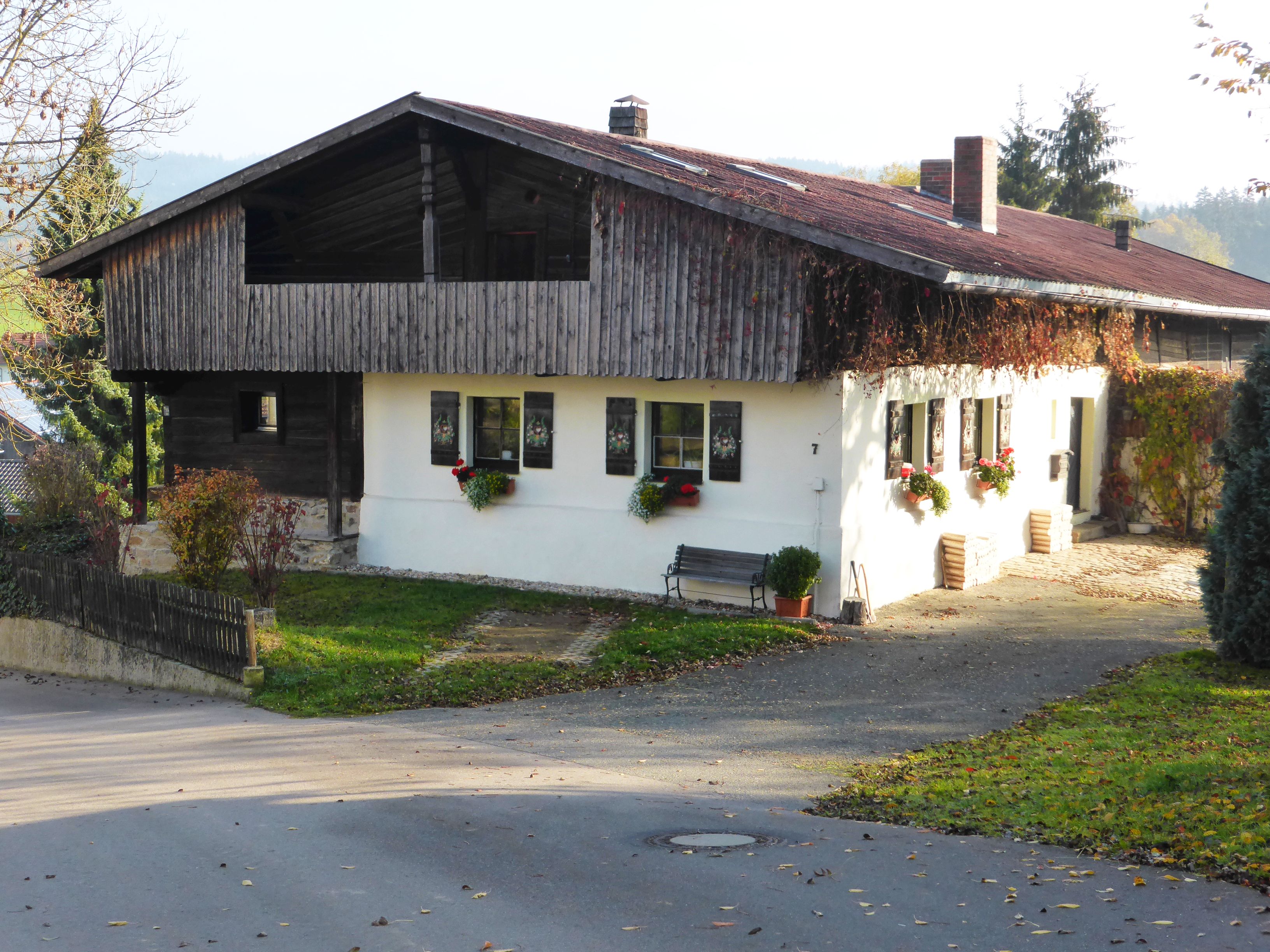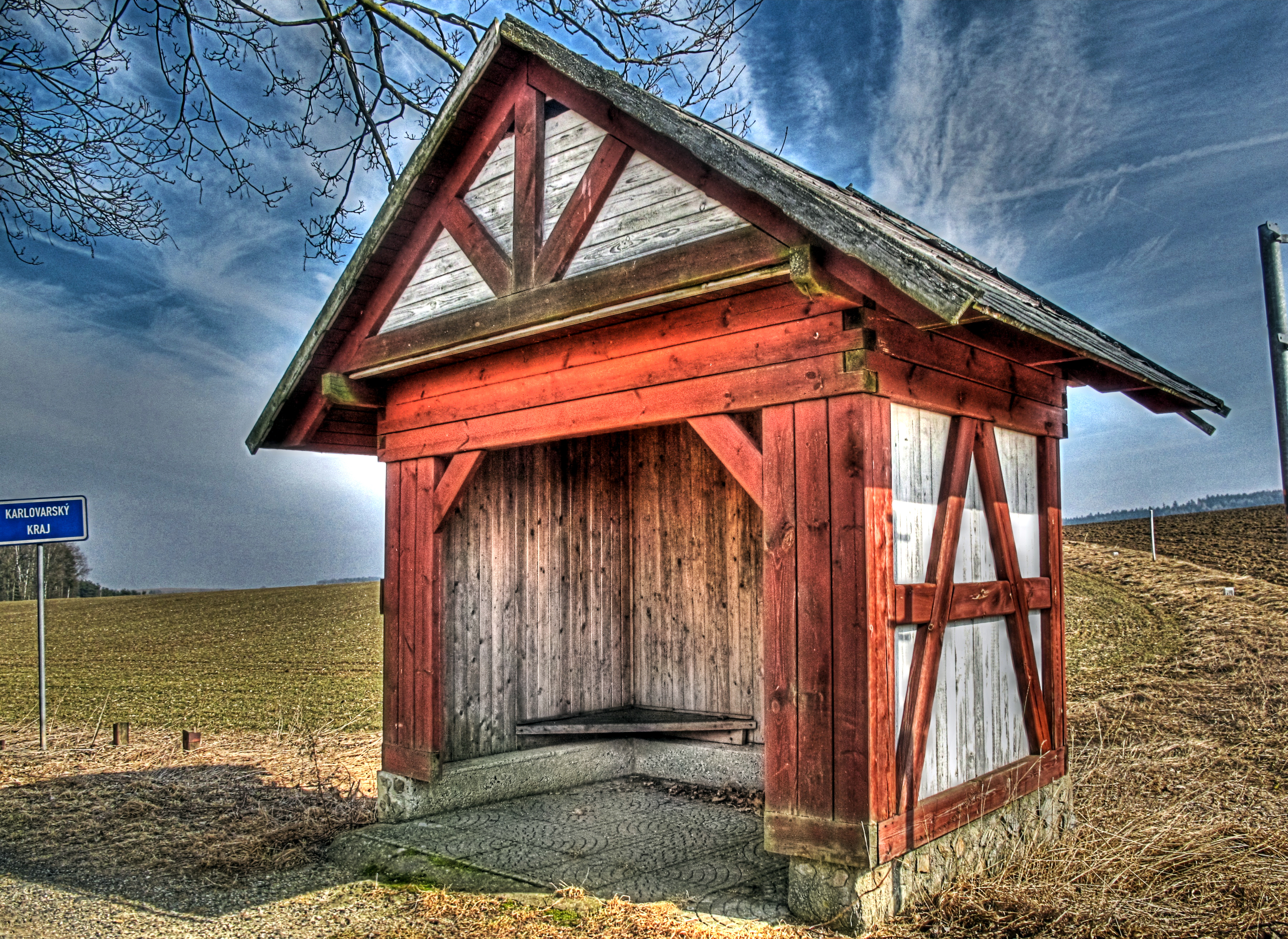|
Waldlerhaus
The Waldlerhaus is a local form of agricultural building, typical of the Bavarian Forest and Upper Palatine Forest in Germany. The term ''Waldlerhaus'' goes back to the 19th century and describes the house of a person who lives in and from the forest. Its distribution area is bounded by the edges of the Bavarian and Upper Palatine Forests. The boundary of the associated cultural-historical region has been complicated by recent history. Until the Second World War the area of the lower Bavarian Forest, the Mühlviertel in Austria and the southern Bohemian Forest in present-day Czech Republic, formed one large unit. This means there is also a difficulty in determining its boundary with the Bohemian Forest house (''Böhmerwaldhaus''), which occurs in the Czech Republic and in the "Šumava", the Czech part of the Bohemian Forest. Description The Waldlerhaus is, as a rule, a single-ridge house (''Einfirsthaus'') with a gable roof. They are mostly small one- or two-storey unit farmh ... [...More Info...] [...Related Items...] OR: [Wikipedia] [Google] [Baidu] |
Bavarian Forest
The village of Zell in the Bavarian Forest The Bavarian Forest (German: ' or ''Bayerwald''; bar, Boarischa Woid) is a wooded, low-mountain region in Bavaria, Germany that is about 100 kilometres long. It runs along the Czech border and is continued on the Czech side by the Bohemian Forest (Czech: ''Šumava''). Most of the Bavarian Forest lies within the province of Lower Bavaria, but the northern part lies within Upper Palatinate. In the south it reaches the border with Upper Austria. Geologically and geomorphologically, the Bavarian Forest is part of the Bohemian Forest - the highest of the truncated highlands of the Bohemian Massif. The area along the Czech border has been designated as the Bavarian Forest National Park (240 km2), established in 1970 as the first national park in Germany. Another 3,008 km2 has been designated as the Bavarian Forest Nature Park, established 1967, and another 1,738 km2 as the Upper Bavarian Forest Nature Park, established in 1 ... [...More Info...] [...Related Items...] OR: [Wikipedia] [Google] [Baidu] |
Upper Palatine Forest
The Upper Palatine Forest (german: Oberpfälzer Wald or ''Böhmischer Wald'', cs, Český les) is a mountain range in Central Europe that is divided between Germany and the Czech Republic. It is part of the larger Bohemian Massif and the German Central Uplands. Geography The German side belongs to the Upper Palatinate region of Bavaria, it stretches about from the Bavarian Forest in the south up to the Fichtel Mountains and the Steinwald range in the north. However, the highest peaks of the range lie along the eastern Czech side in the Plzeň Region of western Bohemia, northwest of the Bohemian Forest. The southern rim runs from the Cham and Furth Basin across the border to the Všeruby (''Neumark'') mountain pass, which is part of the Main European Watershed. The other end is marked by Waldsassen, the northernmost town of the Upper Palatinate. The Mittelgebirge range is a mountainous solid mass, its highest point Čerchov being at an altitude of . Prominent rocks includ ... [...More Info...] [...Related Items...] OR: [Wikipedia] [Google] [Baidu] |
Germany
Germany,, officially the Federal Republic of Germany, is a country in Central Europe. It is the second most populous country in Europe after Russia, and the most populous member state of the European Union. Germany is situated between the Baltic and North seas to the north, and the Alps to the south; it covers an area of , with a population of almost 84 million within its 16 constituent states. Germany borders Denmark to the north, Poland and the Czech Republic to the east, Austria and Switzerland to the south, and France, Luxembourg, Belgium, and the Netherlands to the west. The nation's capital and most populous city is Berlin and its financial centre is Frankfurt; the largest urban area is the Ruhr. Various Germanic tribes have inhabited the northern parts of modern Germany since classical antiquity. A region named Germania was documented before AD 100. In 962, the Kingdom of Germany formed the bulk of the Holy Roman Empire. During the 16th ce ... [...More Info...] [...Related Items...] OR: [Wikipedia] [Google] [Baidu] |
Second World War
World War II or the Second World War, often abbreviated as WWII or WW2, was a world war that lasted from 1939 to 1945. It involved the vast majority of the world's countries—including all of the great powers—forming two opposing military alliances: the Allies and the Axis powers. World War II was a total war that directly involved more than 100 million personnel from more than 30 countries. The major participants in the war threw their entire economic, industrial, and scientific capabilities behind the war effort, blurring the distinction between civilian and military resources. Aircraft played a major role in the conflict, enabling the strategic bombing of population centres and deploying the only two nuclear weapons ever used in war. World War II was by far the deadliest conflict in human history; it resulted in 70 to 85 million fatalities, mostly among civilians. Tens of millions died due to genocides (including the Holocaust), starvation, ma ... [...More Info...] [...Related Items...] OR: [Wikipedia] [Google] [Baidu] |
Mühlviertel
The Mühlviertel () is an Austrian region belonging to the state of Upper Austria: it is one of four "quarters" of Upper Austria, the others being Hausruckviertel, Traunviertel, and Innviertel. It is named after the three rivers ', ', and '. Region The Mühlviertel consists of the four Upper Austrian districts that lie north of the river Danube: Rohrbach, Urfahr-Umgebung, Freistadt and Perg. The parts of the state capital Linz that lie north of the Danube also belong to the Mühlviertel. Geologically it is a part of the Bohemian Massif. Major towns include Rohrbach, Bad Leonfelden, Freistadt and Perg. History The region was the site of a notorious war crime at the end of World War II, when hundreds of starving Soviet POWs escaped from nearby Mauthausen concentration camp and were pursued and murdered around Mühlviertel; the SS referred to the event as the Mühlviertler Hasenjagd ("Mühlviertel rabbit hunt"). During the Allied occupation of Austria The Allied occupation ... [...More Info...] [...Related Items...] OR: [Wikipedia] [Google] [Baidu] |
Austria
Austria, , bar, Östareich officially the Republic of Austria, is a country in the southern part of Central Europe, lying in the Eastern Alps. It is a federation of nine states, one of which is the capital, Vienna, the most populous city and state. A landlocked country, Austria is bordered by Germany to the northwest, the Czech Republic to the north, Slovakia to the northeast, Hungary to the east, Slovenia and Italy to the south, and Switzerland and Liechtenstein to the west. The country occupies an area of and has a population of 9 million. Austria emerged from the remnants of the Eastern and Hungarian March at the end of the first millennium. Originally a margraviate of Bavaria, it developed into a duchy of the Holy Roman Empire in 1156 and was later made an archduchy in 1453. In the 16th century, Vienna began serving as the empire's administrative capital and Austria thus became the heartland of the Habsburg monarchy. After the dissolution of the H ... [...More Info...] [...Related Items...] OR: [Wikipedia] [Google] [Baidu] |
Bohemian Forest
The Bohemian Forest, known in Czech as Šumava () and in German as Böhmerwald, is a low mountain range in Central Europe. Geographically, the mountains extend from Plzeň Region and South Bohemia in the Czech Republic to Austria and Bavaria in Germany, and form the highest truncated uplands of the Bohemian Massif, up to 50 km wide. They create a natural border between the Czech Republic on one side and Germany and Austria on the other. Names and etymology For political reasons, the Bohemian and German sides have different names in their languages: in Czech, the Bohemian side is called ''Šumava'' and the Bavarian side ''Zadní Bavorský les'' ( en, Rear Bavarian Forest), while in German, the Bohemian side is called ''Böhmerwald'' ( en, Bohemian Forest), and the Bavarian side ''Bayerischer Wald'' ( en, Bavarian Forest). In Czech, ''Šumava'' is also used as a name for the entire region in Bohemia and Germany. The designation ''Šumava'' has been attested in the late 15t ... [...More Info...] [...Related Items...] OR: [Wikipedia] [Google] [Baidu] |
Šumava
The Bohemian Forest, known in Czech as Šumava () and in German as Böhmerwald, is a low mountain range in Central Europe. Geographically, the mountains extend from Plzeň Region and South Bohemia in the Czech Republic to Austria and Bavaria in Germany, and form the highest truncated uplands of the Bohemian Massif, up to 50 km wide. They create a natural border between the Czech Republic on one side and Germany and Austria on the other. Names and etymology For political reasons, the Bohemian and German sides have different names in their languages: in Czech, the Bohemian side is called ''Šumava'' and the Bavarian side ''Zadní Bavorský les'' ( en, Rear Bavarian Forest), while in German, the Bohemian side is called ''Böhmerwald'' ( en, Bohemian Forest), and the Bavarian side ''Bayerischer Wald'' ( en, Bavarian Forest). In Czech, ''Šumava'' is also used as a name for the entire region in Bohemia and Germany. The designation ''Šumava'' has been attested in the late 1 ... [...More Info...] [...Related Items...] OR: [Wikipedia] [Google] [Baidu] |
Kager 7-1
Kager is a surname. Notable people with the surname include: * Bernd Kager (born 1987), Austrian footballer * Johann Matthias Kager (1566–1634), German painter *Reinhard Kager Reinhard Kager (born 2 April 1954) is an Austrian philosopher, journalist and music promoter who also worked as a music producer. Career Born in Graz, Kager studied philosophy, sociology and music at the University of Graz and at the Kunstun ... (born 1954), Austrian philosopher, journalist, and music promoter * René Kager (born 1957), Dutch linguist {{surname ... [...More Info...] [...Related Items...] OR: [Wikipedia] [Google] [Baidu] |
Gable Roof
A gable roof is a roof consisting of two sections whose upper horizontal edges meet to form its ridge. The most common roof shape in cold or temperate climates, it is constructed of rafters, roof trusses or purlins. The pitch of a gable roof can vary greatly. Distribution The gable roof is so common because of the simple design of the roof timbers and the rectangular shape of the roof sections. This avoids details which require a great deal of work or cost and which are prone to damage. If the pitch or the rafter lengths of the two roof sections are different, it is described as an 'asymmetrical gable roof'. A gable roof on a church tower (gable tower) is usually called a 'cheese wedge roof' (''Käsbissendach'') in Switzerland. Its versatility means that the gable roof is used in many regions of the world. In regions with strong winds and heavy rain, gable roofs are built with a steep pitch in order to prevent the ingress of water. By comparison, in alpine regions, gable roo ... [...More Info...] [...Related Items...] OR: [Wikipedia] [Google] [Baidu] |





